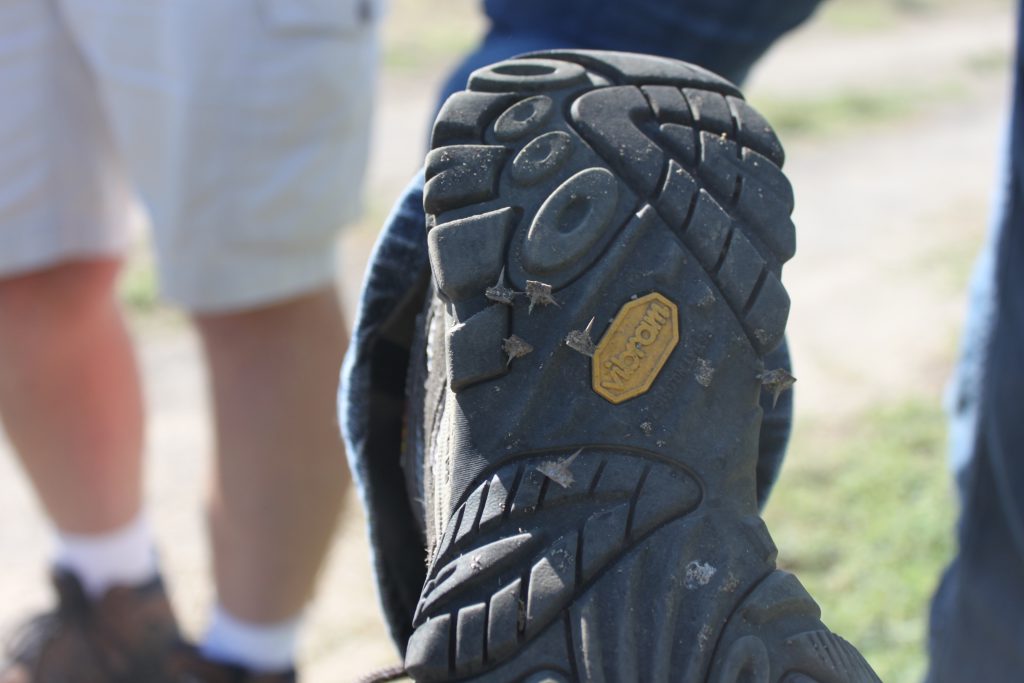Scientific name: Tribulus terrestris
What Is It?
Puncturevine, (Tribulus terrestris), also known as goathead or Mexican sandbur, is a small, typically low-growing annual plant that produces sharp, spine-covered fruits. The fruits split further into five smaller sections that have seeds, two prominent spines, and several smaller prickles. It often is found in disturbed areas such as pastures, roadsides, orchards, vineyards, waste places, parks, railway yards, and agricultural areas.
Is It Here Yet?
Yes. Puncturevine is established across most of the country. In Washington, it is present mostly east of the Cascade Mountains. It has been reported in Clark and Cowlitz Counties, although in Clark County it was eradicated successfully.
Why Should I Care?
Puncturevine’s spiny fruits can injure people and animals. The leaves are toxic to livestock and the spiny fruits can pierce the soles of shoes and bicycle tires. The seeds can survive three to seven years in the ground, making it difficult to remove an infestation.
How Can We Stop It?
Mechanical control methods such as digging and pulling are effective, but ensure seeds don’t fall off the plant. Also, dispose of the plant and seeds properly so they don’t resprout. Mowing is not effective because the plant grows very close to the ground.
Removing plants before they can produce seeds is ideal. Cleaning shoes, tires, and gear to remove puncturevine seeds will help prevent its spread. For specific chemical control recommendations, please contact the county noxious weed control board.
What Are Its Characteristics?
- Small yellow flowers with five petals.
- 1- to 3-inch leaves that have many ¼-inch-long leaflets.
- Plants form a dense mat of vegetation.
- Small, tough, spikey seed pods.
Additional Photographs


